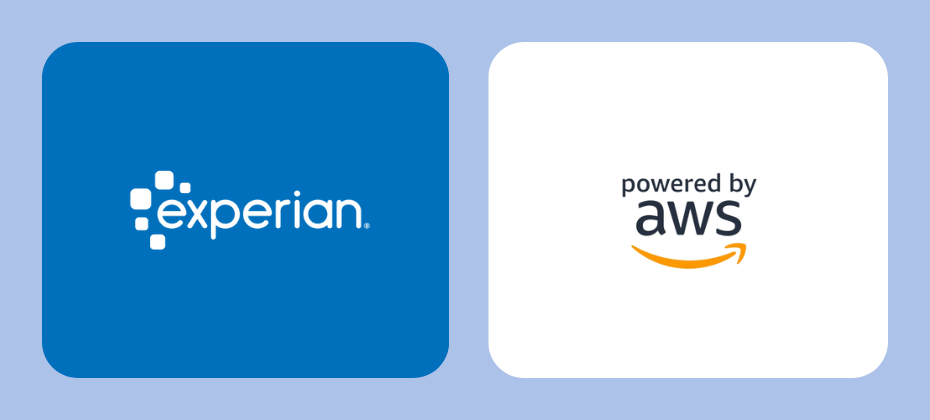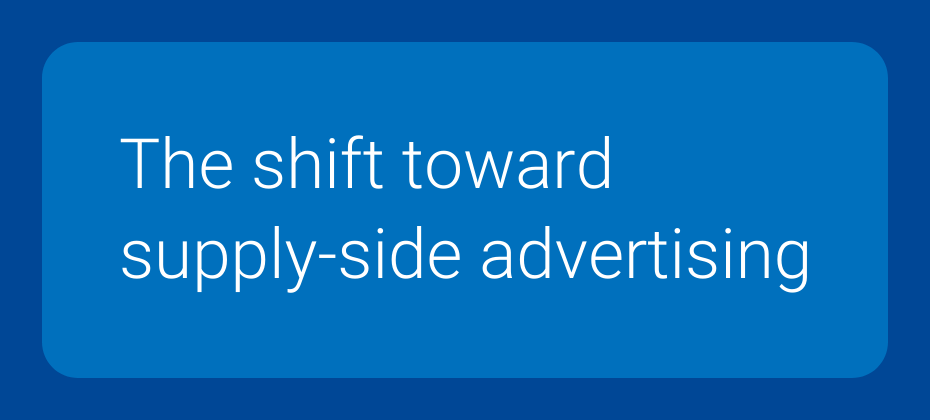Manage your data
The latest trends in data management, including collection, cleanliness, security, linkage and accessibility.

Explore the impact of cookie deprecation on digital marketing and learn strategies to adapt using ethical data practices and first-party data.

In the post-cookie landscape, staying ahead requires innovative strategies and partnerships. This case study dives into how MiQ, a leader in the cookieless era, strengthened its Identity Spine with the integration of Experian's cross-device Graph. Challenge MiQ faced a pivotal challenge in avoiding a static approach to strategies and partners while evolving its cookieless initiatives. MiQ aimed to build omnichannel interoperability by integrating privacy-first partners into its Identity Spine. MiQ's primary objectives included: Reaching target audiences in privacy-compliant ways. Expanding their cookieless targeting solutions. Maintaining or increasing the scale expected from cookie-based targeting. Solution To address these challenges, MiQ strategically incorporated Experian's cross-device Graph into its proprietary Identity Spine. MiQ's Identity Spine seamlessly connects over 60 cookieless data feeds and 25 ID solutions. The integration allowed MiQ to: Create a unified view: MiQ now has a unified view of its clients' target audiences, enhancing its understanding and targeting capabilities. Increase scale: By matching first-party data to multiple universal IDs, MiQ expanded its reach across devices, contributing to a 51% increase in seed audience reach and a 64% increase in universal IDs. Improve efficiency: The combination of Experian's data with MiQ's Identity Spine facilitated cross-device ID resolution, leading to more accurate measurement and reporting. Experian's global data coverage complemented MiQ's regional expertise, amplifying global reach and adaptability to changing regulations. "Experian's Graph has bolstered our already comprehensive, multi-ID Identity Spine with incredible data on cross-device ownership and cross-channel behavior."Georgie Haig, Strategy and Partnerships Director, MiQ Digital Results The integration of Experian's data solution significantly contributed to the success of MiQ's Identity Spine expansion. The results speak volumes: A 51% increase in seed audience reach across devices. A 64% boost in reaching audiences through universal IDs. Experian's Graph added 6.5 devices to each matched IP address, enhancing scale and targeting capabilities. A 70% match rate in associating MiQ-provided IP addresses with universal IDs. These outcomes showcase how Experian's Graph empowered MiQ to find, grow, and measure customers across screens, providing a future-proofed solution for evolving industry challenges. Evolve your cookieless strategies with Experian MiQ's Identity Spine sustains its success through a robust data partnership with Experian, a partnership that continuously evolves as MiQ explores expanded applications of our products. The exploration aims to further enrich MiQ's data-driven solutions. Download the full case study to uncover the strategies that empowered MiQ's successful expansion of its Identity Spine with Experian's Graph. Your path to navigating the cookieless landscape, enhanced targeting, and measurement starts here. Download the full case study About MiQ Digital MiQ is a global programmatic media partner for marketers and agencies, with 19 offices across Europe, North America, and the Asia-Pacific region. They specialize in connecting data from multiple sources to solve business problems for their clients. They are award-winning experts in data science, analytics, and programmatic trading, focused on ensuring clients' media investments are spent on the right audiences in the right environments. To learn more, please visit www.wearemiq.com. Latest posts

Cookies are leaving us, but that doesn’t have to mean performance has to. That’s why Experian is taking the steps needed to future-proof identity in our Graph, including adding Unified ID 2.0 (UID2) from The Trade Desk. Experian currently supports UID2 in our Graph outputs for demand-side platforms (DSPs). UID2 support in our Graph outputs will be available to all approved partners by December 2023. In this blog post, we talk about why cookieless IDs, like UID2, that are coming to market because of cookie deprecation, are important, and how incorporating cookieless IDs into an identity graph can help you prepare for a cookieless future. What are cookieless IDs? Like cookies, cookieless IDs provide you with a comprehensive view of a consumer’s digital activity. Unlike cookies, identity providers produce cookieless IDs, using user-consented data and deterministic and probabilistic data signals (like hashed emails or mobile ad IDs). Cookieless IDs are a newer identifier that allows the advertising industry to maintain our understanding of consumers’ digital actions, helping to ensure we continue to generate smart, data-driven insights, targets, activation strategies, personalized experiences, and measurement and attribution. Why should you incorporate cookieless IDs into an identity graph? Adding cookieless IDs to an identity graph allows for licensees of the graph to: Resolve the universal ID to a consolidated consumer profile and know which other digital IDs tie to the cookieless ID Establish a unified view of the consumer with a privacy-compliant ID Produce data-driven and informed advertising strategies that still drive results, without the use of cookies Experian’s Graph Experian’s Graph is one of the most robust and signal agnostic identity graphs in the market. Experian’s Graph supports most digital IDs, including cookieless IDs, such as ID5, UID2, and Hadron ID. When you license Experian’s Graph, you increase your ability to better understand the different digital IDs that tie to a household or individual. Additionally, with our cookieless ID support, you can continue to understand your consumer and their digital IDs in the cookieless world. Why is it crucial to include UID2 support in Experian's Graph outputs? The Trade Desk is the largest, independent demand-side platform. They’ve created a cookieless ID, UID2, that they hope can power the advertising world to come across the open web. UID2 is an alternative solution to third-party cookies that when utilized in an identity graph, can offer a clearer picture of your consumer, enabling frequency controls and better management, across both digital and connected TV (CTV). Approved DSPs can add UID2s to their Experian Graph, giving them access to one of the more trusted and prominent cookieless IDs in the market today. Additionally, DSPs can use this identifier to decide whether to bid on certain inventory or not, on behalf of their advertiser partner. And, if we hedge our bets, it will only grow in prominence and use. While only available to approved DSPs today for use in the Experian Graph, the forthcoming encrypted UID2 token will provide this capability to the entire ecosystem, which allows us all to speak the same language and operate as efficiently as possible. "We are excited to support UID2, one of the premier IDs to support the future of addressability across the open internet, in the Experian Graph. We continue to see the adoption of UID2 across the demand-side ecosystem, increasing addressability across growing channels like CTV and beyond. I am personally excited to see how this momentum continues to increase over the remainder of 2023 and into 2024."chris feo, svp, sales & partnerships, experian Future-proof your identity strategy with Experian Graph and UID2 We’ve seen the impact that cookies have had on digital advertising and marketing. With the impending third-party cookie deprecation, you will need to adopt alternative cookieless ID solutions such as Unified ID 2.0. Experian is well-positioned to help you navigate this change, offering UID2 support in our Graph outputs for all approved partners by December 2023. Take the right steps now to future-proof your identity strategy and discover lasting success even without cookies. Alongside Experian’s Graph solution, you can achieve resilience in an ever-changing world of digital marketing and advertising. Now is the time to get ready for a cookieless future. Connect with an Experian team member to learn more about our Graph capabilities today. Learn more about Experian's Graph today Latest posts

Centralized data access is emerging as a key strategy for advertisers. In our next Ask the Expert segment, we explore this topic further and discuss the importance of data ownership and the concept of audience as an asset. We're joined by industry leaders, Andy Fisher, Head of Merkury Advanced TV at Merkle, and Chris Feo, Experian’s SVP of Sales & Partnerships who spotlight Merkle's commitment to centralized data access and how advertisers can use our combined solutions to navigate industry shifts while ensuring consumer privacy. Watch our Q&A to learn more about these topics and gain insights on how to stay ahead of industry changes. The concept of audience as an asset In order to gain actionable marketing insights about your audience, you need to identify consumers who are actively engaged with your brand and compare them against non-engaged consumers, or consumers engaged with rival brands. Audience ownership Audience ownership is a fundamental marketing concept where marketers build, define, create, and own their audience. This approach allows you to use your audiences as an asset and deliver a customized journey to the most promising prospects across multiple channels. With this strategy, you enhance marketing effectiveness and ensure ownership over your audience, no matter the platform or channel used. Merkle enables marketers to own and deploy said asset (audience) so that marketers can have direct control over their audience. With audience strategy, you can tie all elements together – amplify your marketing reach, while maintaining control of your audience. Merkle connects customer experiences with business results. Data ownership Data ownership refers to the control organizations have over data they generate, including marketing, sales, product, and customer data. This data is often scattered across multiple platforms, making it difficult to evaluate their effectiveness. Alternatively, owning this data, which is typically housed in a data warehouse, allows the creation of historical overviews, forecasting of customer trends, and cross-channel comparisons. With advertisers and publishers both claiming ownership over their respective data and wanting to control its access, there has been a growing interest in data clean rooms. Data clean rooms The growing interest in data clean rooms is largely due to marketers increasing preference to maintain ownership over their audience data. They provide a secure environment for controlled collaboration between advertisers and publishers while preserving the privacy of valuable data. Data clean rooms allow all parties to define their usage terms – who can access it, how it is used, and when it is used. The rise in the use of data clean rooms strengthens data privacy and creates opportunities for deeper customer insights, which leads to enhanced customer targeting. Data clean rooms unlock new data sets, aiding brands, publishers, and data providers in adapting to rapidly changing privacy requirements. Why is centralized data access important? Centralized data access is crucial for the effective organization and optimization of your advertising campaigns. It involves consolidating your data in one place, allowing for the identification of inconsistencies. Merkle’s Merkury platform The concept of centralized data is a key component of Merkle’s Merkury platform, an enterprise identity platform that empowers brands to own and control first-party identity at an individual level. A common use case involves marketers combining their first-party data with Merkury's data assets and marketplace data assets to build prospecting audiences. These are later published to various endpoints for activation. The Merkury platform covers three classes of data: Proprietary data set – Permissioned data set covering the entire United States, compiled from about 40 different vendors Marketplace data – Includes contributions from various vendors like Experian First-party data from marketers – Allows marketers to bring in their own data Merkury's identity platform empowers brands to own and control first-party identity at an individual level, unifying known and unknown customer and prospect records, site and app visits, and consumer data to a single, person ID. This makes Merkury the only enterprise identity platform that combines the accuracy and sustainability of client first-party data, quality personally identifiable information (PII) data, third-party data, cookie-less media, and technology platform connections in the market. End-to-end management of data Data ownership and management enables you to enhance the quality of your data, facilitate the exchange of information, and ensure privacy compliance. The Merkury platform provides a comprehensive, end-to-end solution for managing first-party data, all rooted in identity. Unlike data management platforms (DMPs) that are primarily built on cookies, the Merkury platform is constructed on a person ID, allowing it to operate effectively in a cookie-free environment. A broader perspective with people-based views The Merkury platform is unique because it contains data from almost every individual in the United States, providing a broader perspective compared to customer data platforms (CDPs) which only contain consumer data. The platform provides a view of the world in a people-based manner, but also offers the flexibility to toggle between person and household views. This enables you to turn data into actionable insights and makes it possible to target specific individuals within a household or consider the household as a whole. How Experian and Merkle work together Experian and Merkle have established a strong partnership that magnifies the capabilities of Merkle's Merkury platform. With Experian’s robust integration capabilities and extensive connectivity opportunities, customers can use this technology for seamless direct integrations, resulting in more effective onboarding to various channels, like digital and TV. "Experian's role in Merkury's data marketplace is essential as they are considered the gold standard for data. It significantly contributes to our connectivity through direct integrations and partnerships. Experian's presence in various platforms and technologies ensures easy connections and high match rates. Our partnership is very important to us."andy fisher, head of merkury advanced tv Through this partnership, Merkle can deliver unique, personalized digital customer experiences across multiple platforms and devices, highlighting their commitment to data-driven performance marketing. Watch the full Q&A Visit our Ask the Expert content hub to watch Andy and Chris's full conversation about data ownership, innovative strategies to empower you to overcome identity challenges, and navigating industry shifts while protecting consumer privacy. Tune into the full recording to gain insights into the captivating topics of artificial intelligence (AI), understanding how retail networks can amplify the value of media, and the growing influence of connected TV (CTV). Dive into the Q&A to gain rich insights that could greatly influence your strategies. Watch now About our experts Andy Fisher, Head of Merkury Advanced TV As the Head of Merkury Advanced TV, Andy's primary responsibility is driving person-based marketing and big data adoption in all areas of Television including Linear, Addressable, Connected, Programmatic, and X-channel planning and Measurement. Andy has held several positions at Merkle including Chief Analytics Officer and he ran the Merkle data business. Prior to joining Merkle, Andy was the EVP, Global Data & Analytics Director at Starcom MediaVest Group where he led the SMG global analytics practice. In this role, he built and managed a team of 150 analytics professionals across 17 countries servicing many of the world’s largest advertisers. Prior to that role, Andy was Vice President and National Lead, Analytics at Razorfish, where he led the digital analytics practice and managed a team of modeling, survey, media data, and business intelligence experts. He and his team were responsible for some of the first innovations in multi-touchpoint attribution and joining online/offline data for many of the Fortune 100. Andy has also held leadership positions at Personify and IRI. Andy holds a BA in mathematics from UC Berkeley and an MA in statistics from Stanford. Chris Feo, SVP, Sales & Partnerships, Experian As SVP of Sales & Partnerships, Chris has over a decade of experience across identity, data, and programmatic. Chris joined Experian during the Tapad acquisition in November 2020. He joined Tapad with less than 10 employees and has been part of the executive team through both the Telenor and Experian acquisitions. He’s an active advisor, board member, and investor within the AdTech ecosystem. Outside of work, he’s a die-hard golfer, frequent traveler, and husband to his wife, two dogs, and two goats! Latest posts

Bridging disparate data in a fragmented world In today's world, consumers engage with brands across multiple platforms, including social media, online marketplaces, in-store experiences, and customer service touchpoints. However, the main challenge for marketers and advertisers is the fragmentation of customer data across these different channels. Each platform generates its own set of data, which is stored in different databases and formats. Integrating these various data sources to create a unified view of the customer is a complex task involving technology and understanding customer behavior across different digital and physical channels. Businesses must link these data fragments to avoid creating a disconnected customer experience. For example, a person may browse products on a mobile app, ask questions through a customer service chat, and eventually purchase in an online marketplace. Traditional data analysis methods often need to recognize these activities as those of a single customer, which can result in missed opportunities to deliver personalized customer experiences across the customer journey. Identity resolution: The key to a unified customer experience Connecting online interactions across various platforms is a challenge for brands. Identity resolution enables enterprises to overcome this challenge by stitching together disparate signals and records to orchestrate experiences and analyze outcomes more effectively. By pairing Experian's identity capabilities with AWS Clean Rooms, enterprises can securely collaborate with their partners to derive deeper insights without exposing sensitive underlying data sets. This partnership between AWS and Experian enables effective matching between disparate data sets, bolstering privacy-enhanced media planning, insights, data enrichment, media activation, and measurement use cases. Depending on their distinct needs and existing identifiers, customers can use two specific offerings of Experian's identity resolution solutions paired with AWS Clean Rooms. Experian's identity resolution products ensure a frictionless brand experience across various channels, enhancing the customer journey from start to finish. Brands can employ our adaptable identity resolution solutions to forge connections between contextual, behavioral, lifestyle, and purchase-based data sources, assembling comprehensive customer profiles. Use dependable digital data to make informed decisions and elevate consumer engagement. Advanced deterministic and probabilistic features, combined with data science and cutting-edge technology, work hand in hand to mitigate risk and uphold data privacy. Such recognition enables a more comprehensive understanding of your clientele, fostering trust and amplifying campaign effectiveness by utilizing securely managed, standardized customer data. With this strategic approach, businesses can achieve their objectives regulatory-compliant. The consumer perspective: Why consistency matters Data fragmentation can lead to inconsistent experiences for consumers, which can be frustrating and erode brand trust. For instance, imagine receiving a promotional email for a product you already purchased through an app or being targeted for a product you decided against. Consumers are increasingly tech-savvy and demand a seamless, integrated experience regardless of how they interact with a brand. They want to feel valued and recognized at every touchpoint and don't care about the complexities of data analytics. As a result, brands face significant pressure to get identity resolution right. Data security and privacy: A Fort Knox for your data AWS Clean Rooms empowers their customers to establish a secure data clean room within minutes, facilitating collaboration with any other entity within AWS. This fosters the generation of unique insights regarding advertising campaigns, investment decisions, clinical research, and more. With AWS Clean Rooms, the need to store or maintain a separate copy of data outside the AWS environment for subsequent dispatch to another party for consumer insight analysis, marketing measurement, forecasting, or risk assessment becomes obsolete. AWS Clean Rooms provides an expansive set of privacy-enhancing controls for clean rooms. This includes query controls, query output restrictions, and query logging that allows customers to tailor restrictions on the queries executed by each clean room participant. Moreover, AWS Clean Rooms include advanced cryptographic computing tools that maintain data encryption—even during query processing—to adhere to stringent data-handling policies. This process employs a client-side encryption tool—an SDK or command line interface (CLI)—that utilizes a shared secret key with other participants in an AWS Clean Rooms collaboration. With a wealth of expertise in data privacy management, Experian enhances campaign effectiveness and fosters trust by managing standardized customer data securely. By using the identity graph, you can preserve a unique identity for each customer. This strategy enables you to comprehensively understand your clientele and reach your business objectives in a regulatory-compliant manner. The future of data-driven marketing starts here AWS customers can use AWS Clean Rooms to establish their own clean rooms in mere minutes, initiating the analysis of their collective data sets without sharing their underlying data with each other. Customers can use the AWS Management Console to choose their collaboration partners, select data sets, and configure participant restrictions. With AWS Clean Rooms, customers can effortlessly collaborate with hundreds of thousands of companies already using AWS without needing to move data out of AWS or upload it to a different platform. When running queries, AWS Clean Rooms accesses data in its original location and applies built-in, adaptable analysis rules to assist customers in maintaining control over their data. Coupled with Experian's trusted data privacy management and unique Experian ID, businesses can effectively manage customer data, secure partners' communication, and achieve regulatory-compliance objectives. This combination allows companies to use data-backed insights to supercharge their marketing initiatives, resulting in more meaningful customer interactions, improved match rates, and business success. Start collaborating About the authors Kalyani Koppisetti, Principal Partner Solution Architect, AWS Kalyani Koppisetti is a technology leader with over 25 years of experience in the Financial Services Industry. In her current role at AWS, Kalyani advises financial services partners on best-practice cloud architecture. Kalyani works closely with internal and external stakeholders to identify industry technical trends, develop strategies, and execute them to help Financial Services Industry partners build innovative solutions and services on AWS. Technical and Solution interests include Cloud Computing, Software-as-a-Service, Artificial Intelligence, Big Data, Storage Virtualization and Data Protection. Matt Miller, Business Development Principal, AWS In his role as Business Development Principal at AWS, Matt drives customer and partner adoption for the AWS Clean Rooms service specializing in advertising and marketing industry use cases. Matt believes in the primacy of privacy-enhanced data collaboration and interoperability underpinning data-driven marketing imperatives from customer experience to addressable advertising. Prior to AWS, Matt led strategy and go-to-market efforts for ad technologies, large agencies, and consumer data products purpose-built to inform smarter marketing and deliver better customer experiences. Tyler Middleton, Sr. Partner Marketing Manager, Experian Marketing Services Tyler Middleton is the Partner Marketing Lead at Experian. With almost 20 years of strategic marketing experience, Tyler’s focus is on creating marketing strategies that effectively promote the unique value propositions of each of our partners’ brands. Tyler helps our strategic partners communicate their mutual value proposition and find opportunities to stand out in the AdTech industry. Tyler is an alumnus of the Seattle University MBA program and enjoys finding new marketing pathways for our growing partner portfolio. Latest posts

Over the last few months, Experian has released new syndicated audiences to most major platforms supporting retail and travel. In this blog post, we’ll highlight some of these new audiences and how they can be used with other data from Experian to build the perfect audience to reach your customers and prospects. Household Expenditure audiences We’ve created new predictive audiences to help retailers reach consumers across 35 categories likely to spend within that category. A few categories include Apparel, DIY, Health, and more. With the launch of these new audiences, we will retire our existing Household Consumer Expenditure, Online and Retail category audiences in the November Digital Master update. Who these audiences are for Our Household Expenditure audiences use data from multiple sources, providing brands with highly accurate purchase predictions and data that scales for digital execution. Household Expenditure audiences are an excellent solution for brands with new product lines or where targeting based on historical purchases lack signal brands seek. Building data from multiple data sources helps ensure high performance and accuracy and can illuminate trends in consumer shopping patterns. These trends can be used to help predict future shopping behaviors. How to refine our Household Expenditure audiences To refine your audience, you can combine this data with Experian’s demographic and household expenditure audiences to ensure you are reaching consumers. For example, suppose you’re an apparel brand launching a new line aimed toward women over the age of 40. In that case, you can use Experian’s demographic data to reach those women and layer in our household expenditure purchase predictor segment for women's apparel to reach their new target audience. Mobile Location audiences We’ve expanded our location database to include more locations and points of interest. With this new data, we could strengthen our existing mobile location audiences to broaden the reach, improve accuracy, and increase performance. We’ve created 11 new mobile location audiences with our new dataset that supports the retail and travel verticals. These new audiences include new shopping behaviors, including high-income and high-end shoppers and travel and entertainment behaviors, including visiting sporting arenas like MLB, NBA, NFL, and university stadiums. Who these audiences are for These audiences are for brands that want to reach consumers based on their location behaviors. Often valid for retail, travel, and entertainment brands, Mobile Location audiences provide brands with highly accurate data that shows previous intent and interest in critical locations. How to refine our Mobile Location audiences To refine your audience, you can combine your Mobile Location audience with Lifestyle and Interest data. For example, if you are creating an advertising campaign for a hotel near a university stadium for the largest game in the season, you could combine university stadium visitors with sports enthusiasts and in-market for travel to find consumers most likely to be interested in your campaign and staying at the hotel. Purchase-Based Transaction audiences For use cases where predictive audiences aren’t the best fit to reach the right consumer, such as targeting consumer’s historical purchases, we’ve created new purchase-based transaction audiences that utilize opt-in consumer transaction data across 29 retail categories, including apparel, home, lifestyle, health, food and beverage, and more. Who these audiences are for These audiences are a perfect fit for brands trying to reach consumers based on previous purchases. These audiences can be broken out by their spending patterns – frequency of purchase and high spenders – and their response to advertising, including direct mail, email, inserts, and digital. How to refine our Purchase-Based Transaction audiences Combine these new audiences with Mosaic to fine-tune your audience based on their purchasing and lifestyle patterns. Suppose you are a brand with a new line of home décor products launching and will utilize influencers to endorse your product line. In that case, you can use Experian’s purchase-based transaction audiences for high spenders in home décor and layer our Mosaic audience Influenced by Influencers to find consumers who are most likely to purchase and trust an influencer. We can help you discover and activate your perfect audience Our audiences are available in most major data and execution platforms. Visit our partner page for more information. Don’t see our audiences on your platform of choice? We can help you build and activate an Experian audience on the platform of your choice. Contact us Latest posts

The AdTech industry is buzzing with discussions about cookie deprecation and effective strategies to tackle it. One of the commonly suggested solutions is the utilization of clean rooms alongside responsibly sourced first-party data. Above all else, the industry recognizes the importance of respecting consumer data and complying with all privacy laws. Additionally, the industry acknowledges the need for a change in our historical practices. This shift benefits everyone involved, as consumer data is more secure than ever. Tremendous investments have been made to ensure the utmost security of consumer information. Clean rooms are one of the tools that enable companies to use data securely, ensuring the content that you see is as relevant as possible. Two ways the AdTech industry is addressing cookie deprecation The days of sending data directly to partners for usage or for using only third-party data for marketing efforts are gone. Now, the emphasis is on responsibly collecting first-party data and using clean rooms to enrich first-party data to enhance marketing efforts. First-party data The industry is starting to lean into first-party data gained through transparent means. This valuable information provides organizations with deeper insights into their customers, allowing for more personalized and effective interactions. By embracing the power of first-party data, either on its own or enriched via partner collaboration, you can cultivate stronger relationships, build trust, and deliver tailored experiences that resonate with your customers on a deeper level. Clean rooms Many data lakes and warehouses offer this service, ensuring their clients can not only store their data with them but can connect it with other partners in a secure environment and extract more information through the combined data sets versus their data on its own. Brands and their partners recognize that they need to work together, and a clean room provides a secure environment to share their first-party data without exposing their sensitive data to their partner. So, while we're losing third-party cookies, brands and partners can still get value from first-party data by using a clean room to generate audience insights, segmentation strategies, personalized experiences and offers, media plans, and measurement and attribution. Three ways data clean rooms can improve Data clean rooms are a great way to facilitate data collaboration while ensuring sensitive data is not exposed. Data clean rooms are not yet easy to use nor are they inexpensive. They require investment, both financially and resource allocation-wise, and you are not guaranteed to yield great match results. Let’s dive into three areas for data clean room improvement. High cost According to the IAB's State of Data 2023, nearly two-thirds of data clean room users spent at least $200K on the technology in 2022. In addition, one-third of data clean room users expect the price of data clean rooms to rise in 2023. The high cost of this solution can make it inaccessible to smaller companies in the advertising space. Resource intensive Nearly half of the companies using data clean rooms have a team of six or more dedicated to the technology, according to the IAB’s State of Data 2023, while nearly a third of companies using data clean rooms have 11 or more employees focused on the technology. Data clean rooms are not turnkey solutions. Inefficient matching Even if companies are using clean rooms does not mean that they are automatically going to achieve great success. Identity fragmentation, data hygiene, and differing identifiers can suppress client match rates in clean rooms, leading to significant investment and a lackluster output. How to get the most return on your clean room investment The finish line for data collaboration in clean rooms is not just having a relationship with a clean room. Instead, you should incorporate an identity resolution solution in your clean room. By adding an identity solution to your clean room, you can: Resolve and match all your identity data, regardless of the identity data that you or your partner have, giving you a larger data foundation to analyze. Generate more valuable insights and information, leading to a better experience for your customers. Join data sets to create smarter activation and targeting strategies and produce more holistic measurement. Experian can help you get started with identity resolution and data clean rooms If you are investing in data clean rooms, that means you are committed to the best in data practices. Experian recommends going the extra step and that you also invest in finding an identity resolution solution. By doing this, you can see better match rates. Experian offers this capability and has existing relationships with three clean room partners, Amazon Web Services, InfoSum, and Snowflake. In addition to collaborating in clean rooms, we offer collaboration in two other secure environments. Contact us today to discuss how we enable identity resolution in clean rooms or to chat about our other collaboration capabilities. Get in touch Latest posts

Ongoing signal loss is driving marketers, agencies, and platforms to turn to supply-side advertising. By using first-party data from publishers and platforms, supply-side advertising has the potential to deliver high-quality audience and context for more effective ad targeting. The supply-side refers to the publishers and platforms that sell advertising inventory. These companies have access to first-party data about their users, which can be used to target ads more effectively. By tapping into supply-side advertising, you can overcome the challenges of signal loss and target ads more effectively. To shed light on this topic, we hosted a panel discussion at Cannes, featuring industry leaders from Audigent, Captify, Newsweek, Pubmatic, Truthset, and Experian. In this blog post, we'll explore how partnerships between supply-side channels and publishers are working to enhance advertising opportunities while balancing the need for transparency and control in programmatic ad buying. Shift toward supply-side advertising Traditionally, the demand-side dominated the programmatic media buying chain due to an abundance of supply. However, with the emergence of finite data and its interpretation, collaboration between supply-side technology companies and publishers is required to redefine these economics. It's no longer sufficient for the demand-side to blindly negotiate prices based on limited knowledge. Marketers can still define their target audience, but effective communication is key. This presents an opportunity for premium journalistic outlets to guide the industry's understanding of how data from the supply-side impacts media buying economics in the future. "Supply-side technology partnerships with publishers are now in a position to shape the economics of programmatic media buying as there is a finite amount of data. It’s crucial for supply-side technology companies to collaborate with publishers to shape these new economics. This presents an opportunity for premium journalistic outlets to provide guidance on how data from the supply-side can affect the future of media buying." matthew papa, svp, business & corporate development, captify Democratizing data from the supply-side Cookies haven't brought significant benefits to premium publishers. They mainly serve to retarget users from sites like The Wall Street Journal to advertising sites. This approach primarily serves the purpose of generating revenue. The elimination of third-party cookies presents an opportunity for premium publishers to shift this dynamic. By using their knowledge of first-party audiences, and using identifiers like Experian's LUID, publishers can own and understand their audience data, which can then be modeled. Here’s how publishers can win Establishing a connection with consumers and emphasizing the value exchange is essential to building trust. Determining what incentives and benefits consumers find meaningful will be crucial in gaining their opt-in. With consumers The Apple tracking transparency initiative, specifically the deprecation of IDFA signals, had significant implications for mobile app developers. Overnight, opt-in rates plummeted, causing a drastic decline in iOS ad monetization. To combat this, developers focused on demonstrating the value exchange to consumers—better ad experiences and personalized content. By articulating the benefits over a couple of years, opt-in rates increased from 10-15% to 30-40%. The key takeaway is the need to effectively communicate the value exchange to consumers. With partners Trust plays a crucial role in planning your first-party data strategy. Publishers, advertisers, and data partners highly value their proprietary data. However, there are concerns about how it's used, mishandled, or leaked in the ecosystem. Building trust between partners is essential. It's important to work with trustworthy partners who are agnostic, committed to innovative solutions, and globally oriented. These partners can help navigate the complexities of laws and regulations. Choosing the right partners is crucial in a world where first-party data is a key asset. "Power is shifting toward brands that have strong relationships with customers and possess first-party data. As the ownership of customer data becomes more important, it is crucial to establish a first-party data strategy to better serve customers and adapt to changing market dynamics."chip russo, president, truthset Balance probabilistic and deterministic data Focus on building trust with consumers and collaborating with reliable companies to share data. However, it's important to remember that achieving a 100% opt-in rate is unlikely. The cookie, which has become omnipresent, requires us to shift our strategic thinking. We need to consider both deterministic and probabilistic approaches instead of viewing them as mutually exclusive. The landscape will be fragmented, with some consumers opting in and others not. "Probabilistic and predictive audience data holds immense potential. With the power of AI, we can expect enhanced performance and efficacy in media campaigns. At Audigent, we firmly believe that this data will outperform deterministic data, making it an integral part of our strategy." drew stein, ceo, audigent Premium content Trust plays a crucial role in leading to premium content. By placing trust in the best media brands, data, and technology partners, we can expect to see improvements in media, journalism, and advertising. This shift may have a direct impact on the long tail of free natural resources, making it more challenging for them to thrive. However, this change is ultimately beneficial since it promotes higher-quality media experiences overall. "The homepage surface is making a comeback in the publishing industry, proving its value in establishing a direct connection with readers. While we acknowledge the importance of technology partnerships for addressability and identity, our core competency as a publisher remains outstanding journalism that captures and engages great audiences." kevin gentzel, cco, newsweek Watch our Cannes panel for more on supply-side advertising We hosted a panel in Cannes that covered supply-side advertising. Check out the full recording below to hear what leaders from Audigent, Captify, Newsweek, Pubmatic, Truthset, and Experian had to say. Watch now Check out more Cannes content: Our key takeaways from Cannes Lions 2023 Insights from a first-time attendee Four new marketing strategies for 2023 Exploring the opportunities in streaming TV advertising The future of identity in cookieless advertising Follow us on LinkedIn or sign up for our email newsletter for more informative content on the latest industry insights and data-driven marketing. Latest posts

Identity is being constrained, forcing the industry to rethink the way it has operated for 27 years. Industry, regulatory, technology and data trends are leading to a fundamental shift in the way that data is permissioned, accessed, and used for marketing purposes. How the industry defines digital identity moving forward, consumer trust and transparency need to be at the forefront. We, as an industry, have the opportunity to build a more effective advertising framework that puts consumers and data privacy at its core, a framework that won’t rely on a single prevailing identifier. That approach requires all of us to be upfront and transparent about our data practices and usage and make it easy for consumers to opt-out of the use of their information for advertising and marketing solicitations. We, at Experian, also believe that there are a lot of ways to improve the experience for consumers, who are becoming more aware and apprehensive of giving away their data. We believe we can ease the minds of consumers and work within these new constraints by offering better controls and practices around the ways data is shared and utilized. There will be new approaches that come to the market as well that include modeled, non-identifiable information, cohorts, contextual